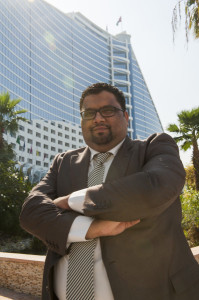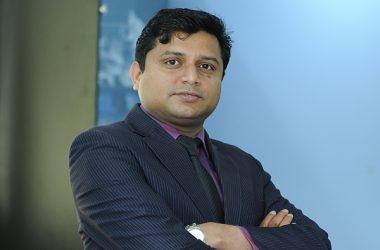
Background
With 21 five star properties in its portfolio – including the world-renowned seven-star Burj Al Arab Hotel – Jumeirah Group has an obligation to provide high quality, non-stop services for its guests and operations teams. Neil Menezes, Vice President, Information Technology Operations, Jumeirah Group, wanted to enable the use of smarter services within the company, and saw the move to a software-defined data centre as an essential catalyst that could allow this to happen.
Key challenges
Menezes wanted to split his single central data centre into two parts, forming a single cloud in the process. As the volume and complexity of the company’s data and applications had increased over time, it had become harder to manage Jumeirah’s separate sites. Menezes wanted to create a faster provisioning system for the company’s applications and online environments, so he could “move knowledge from the heads of employees into the system.”
In October 2013 Menezes set about implementing a simple, smart and open next-generation data centre that could accelerate the deployment and delivery of applications within and across multiple sites and clouds. The architecture would have to work around the complexity and compromises associated with the geographic distribution of data centres and their compute storage nodes. “When the network, and the applications it carries, interact at a pace that ensures that neither has to wait on the other, productivity soars and the cost of the network tumbles,” Menezes says. “Consequently, employees get the best application experience and the overall availability of the data centre improves.”
The desire to integrate the various components of Jumeirah’s technology was a key driver in the move. “We had a lot of great technology at Jumeirah, but nothing to connect it together,” Menezes says. “It was crucial that we could find a way to glue our investments so that the business could benefit. From an IT point of view it is difficult to justify to the management that you can spend millions on technology that people never actually see. Before the implementation we could deploy services but there were problems with our processes.”
Menezes knew that in order to “glue” the company’s technology together, a migration to a software-defined IT infrastructure was necessary. A single management platform would be necessary so the IT team could analyse all components through a single dashboard, and provide swift remedies to any issues. “There are three pillars that drive my philosophy on data centre design,” Menezes says. “Simple, smart and open. It was important that all aspects of the centre could speak the same language, with everything based on OpenStack.”
With this openness in mind, bringing storage, network and security solutions together in the infrastructure was the obvious choice to allow for faster application and service provisioning, which would facilitate the introduction of automated processes and better allocation of human resources.
Menezes says Huawei’s support would prove to be a key factor in the project’s success, offering 24/7 phone assistance, as well as direct contact with the regional General Manager. “Unlike the way certain vendors may attempt to wash their hands of you once initial work has been done, Huawei always went out of their way to help us,” he says. “There is a great deal of entry level support, and they offer help when not even asked, which runs parallel to our work as a hotel, whose job it is to do just that.”
Customer Benefits
Following the implementation, the speed at which IT managers for each hotel can provision services has hugely increased. The systems needed to provision these new services can now be accessed in minutes through a built-in process that orchestrates all tasks needed to access it. With processes now approved through workflows, Menezes’ IT team are able to offer swifter advice to IT managers based on their current infrastructures.
All IT components – including storage, network and security solutions – can now be seen through a single management dashboard. Menezes’ decision to virtualise the company’s data centres has, in short, increased transparency and ease-of-use between the centres’ components. “We now have far greater visibility in how we see the process performing end-to-end,” says Menezes. “By removing inconsistencies in processes and reducing the capacity for people to make errors, we have greatly increased our go-to-market agility.”
“Let’s say the business wanted to provision the infrastructure for a new mobile application,” Menezes says. “Typically this request would have to go through the server teams, storage teams and security teams etc. This would involve seven or eight people and would be relatively time consuming. Now, IT managers can go to a portal and lodge the specifications of their request in terms of what they need. This form is then presented in terms of how the environment needs to be deployed, and the solution is able to orchestrate itself, creating VLANs using OpenStack. The operating system is deployed along with appropriate storage and infrastructure. All processes are decided; relevant software updates are completed when needed.” The orchestrated environment now allows the IT team to focus on helping customers, rather than doing the jobs that automated technology could.
Looking ahead, Menezes says his next aim is to move all components in his data centre – including routing, switching and fabric – from being virtualised to fully-orchestrated. In doing this, he is anxious to work with Huawei yet again, “Huawei completely exceeded our expectations throughout the project,” he says. “We were able to speak to the back-end, developers and programme managers. They always had a ‘never say no’ mentality and never stopped looking beyond tomorrow.






